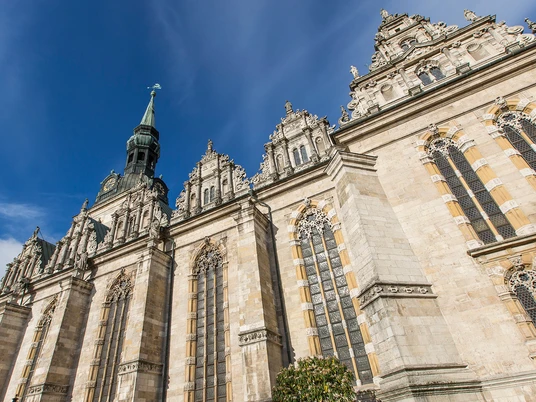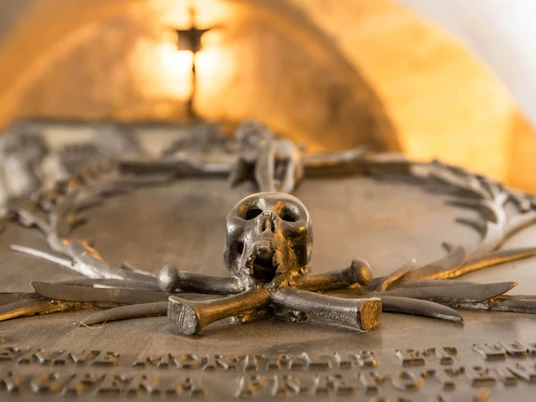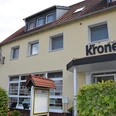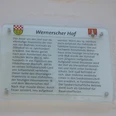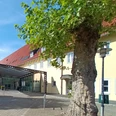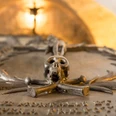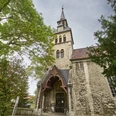- Photos & Map
How would you like to arrive?
- Call
- Description
- Good to know
- Nearby
The main church Beatae Mariae Virginis in Wolfenbüttel is the world's first major Protestant church building. The name of the church means "of the Blessed Virgin Mary" and there were no historical models for this first "large-scale" Protestant church building.
Duke Heinrich Julius, pioneer of the Reformation in Wolfenbüttel, commissioned the construction of the church, and in 1608 the ducal master builder Paul Francke began work. The specifications were complex: on the one hand, the building was to be used as a place of worship for sermons and communion; on the other, it was to represent the splendor and power of the princes and serve as a burial place for the princely family.
The elements that were incorporated into the building are as diverse as the desired purposes: characteristic features of Gothic, Renaissance and Baroque merge under the umbrella term "Mannerism" to create a magnificent building.
Inside, Beatae Mariae Virginis fascinates worshippers and art lovers with its wooden high altar carved by Freiberg sculptor Bernhard Ditterich, the pictorial representation of the Passion story and the richly decorated organ with its impressive 53-stop organ mechanism.
The grave of the court conductor and composer Michael Praetorius is located in the church, although the exact location of the grave is no longer known. The church architect Paul Francke and members of the ducal family, who are buried in the first crypt, which is no longer accessible, and the second crypt, which is still accessible today, also found their final resting place here.
Duke Heinrich Julius, pioneer of the Reformation in Wolfenbüttel, commissioned the construction of the church, and in 1608 the ducal master builder Paul Francke began work. The specifications were complex: on the one hand, the building was to be used as a place of worship for sermons and communion; on the other, it was to represent the splendor and power of the princes and serve as a burial place for the princely family.
The elements that were incorporated into the building are as diverse as the desired purposes: characteristic features of Gothic, Renaissance and Baroque merge under the umbrella term "Mannerism" to create a magnificent building.
Inside, Beatae Mariae Virginis fascinates worshippers and art lovers with its wooden high altar carved by Freiberg sculptor Bernhard Ditterich, the pictorial representation of the Passion story and the richly decorated organ with its impressive 53-stop organ mechanism.
The grave of the court conductor and composer Michael Praetorius is located in the church, although the exact location of the grave is no longer known. The church architect Paul Francke and members of the ducal family, who are buried in the first crypt, which is no longer accessible, and the second crypt, which is still accessible today, also found their final resting place here.
Exhibition "Michael Praetorius"
The permanent exhibition in Wolfenbüttel's main church Beatae Mariae Virginis represents a fundamental redesign of this place of remembrance for Michael Praetorius: The exhibition architecture continues the church space with its colorfulness, while at the same time standing on its own by creating a space within a space. The cube, which can be accessed from four sides, has thematically structured exterior and interior walls designed with texts and images: While the outer walls present Praetorius' life, environment, historical context and afterlife, the inner walls are dedicated to the phases and aspects of his work and its significance in music history.Good to know
Openings
Price info
Due to high running costs of the building, we ask visitors for a donation of 1 Euro each.
Group tours cost 15 Euro plus 1 Euro per person
Public tours are free
Group tours cost 15 Euro plus 1 Euro per person
Public tours are free
Social Media
More information
Group tours of the church are only available when pre-booked by telephone in German or English.
Public tours of the church: 2nd Friday of the month, 5pm at the main door. The tour lasts an hour. No pre-booking is required
Public tours of the church: 2nd Friday of the month, 5pm at the main door. The tour lasts an hour. No pre-booking is required
Author
Lessingstadt Wolfenbüttel
Stadtmarkt 3-6
38300 Wolfenbüttel
Organization
Lessingstadt Wolfenbüttel
License (master data)
Lessingstadt Wolfenbüttel
Nearby
